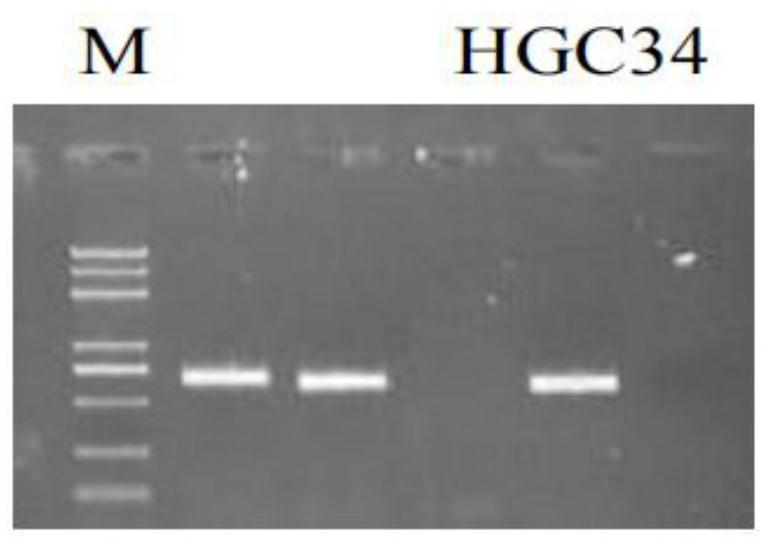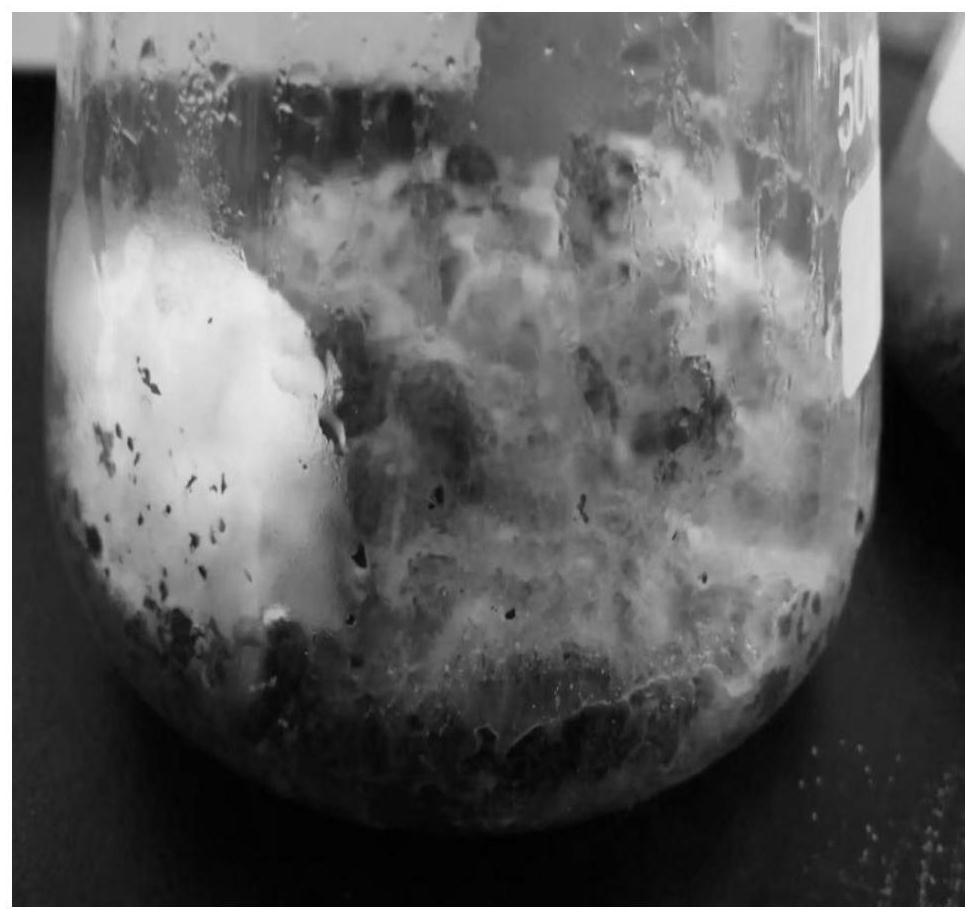High-temperature-resistant pichia guilliermondii strain HGC34 and application of high-temperature-resistant pichia guilliermondii strain HGC34 in livestock and poultry manure deodorization and degradation
A technology of livestock and poultry manure and yeast, applied in the field of microorganisms, can solve problems such as ecological environment hazards, achieve the effect of protecting the environment and promoting rapid degradation and maturity
- Summary
- Abstract
- Description
- Claims
- Application Information
AI Technical Summary
Problems solved by technology
Method used
Image
Examples
experiment example 1
[0035] Collect samples of extremely rotten chestnuts ( figure 1 The bacterial species in ) is separated and identified, and the isolated bacterial strain is extracted genomic DNA according to conventional methods, and PCR amplification is carried out after the genomic DNA is obtained, and the primer sequence of the 18S rDNA gene ITS region sequence is: ITS1 (SEQ:NO.2): 5'-TCCGTAGGTGAACCTGCGG-3'; ITS4 (SEQ: NO. 3): 5'-TCCTCCGCTTATTGATATGC-3'. After the amplification is completed, use agarose gel electrophoresis to detect the PCR products. figure 2 . The sequenced genomic DNA was put into blast alignment, and the results showed that HGC34 had the closest parental relationship with Meyerozyma guilliermondii (Pichia guilliermondii). The isolated strain was identified as Pichia jiemenii.
experiment example 2
[0037] Put the isolated Pichia moniliformes HGC34 into a test tube filled with fresh chicken manure as a base material, and carry out a laboratory test of bacterial strain application. Design three repetitions. The odor intensity grades are shown in Table 1:
[0038] Table 1 Odor evaluation grade
[0039]
[0040]
[0041]The cultured HGC34 bacteria deodorized seed solution (bacteria concentration of 8.0×10 9 CFU / mL) were inoculated into test bottles containing fresh chicken manure, and after fully stirring and mixing, they were placed in a constant temperature incubator at 30 °C for cultivation, and used as a blank control group (CK), and the amount of inoculum was observed every 10 days. The effect on deodorization performance is shown in Table 2.
[0042] Table 2 Effects of different inoculum amounts on deodorization
[0043]
[0044] As can be seen from Table 2, the deodorized seed solution of Pichia moniliformis HGC34 in the inoculation season is completely d...
experiment example 3
[0046] In the test tube of YPD liquid medium, inoculate the seed solution of HGC34 strain (the concentration of bacterial solution is 6.8×10) according to the inoculation amount of 3.0%. 8 CFU / mL), cultured at 30°C, 35°C, 40°C, 45°C, 50°C, 55°C, 60°C, and 65°C for 48h, respectively, and counted the number of yeast and dead and live cells by hemocytometer. The result is as Figure 4 As shown, HGC34 grows best at 55°C, indicating that this strain is a thermophilic strain. Pichia jiemenii HGC34 was observed under the microscope by methylene blue staining, and the cell shape was round or oval, transparent, slightly larger than bacteria. No flagella, sterile filaments, mostly white, a few blue, budding visible, with a smaller bud next to the larger parent cell (see Figure 5 ). Count the dead and live cells under the microscope, the dead cells are blue, and the live cells are colorless, and the proportion of dead and live cells can be calculated by counting. The results showed ...
PUM
 Login to View More
Login to View More Abstract
Description
Claims
Application Information
 Login to View More
Login to View More - R&D
- Intellectual Property
- Life Sciences
- Materials
- Tech Scout
- Unparalleled Data Quality
- Higher Quality Content
- 60% Fewer Hallucinations
Browse by: Latest US Patents, China's latest patents, Technical Efficacy Thesaurus, Application Domain, Technology Topic, Popular Technical Reports.
© 2025 PatSnap. All rights reserved.Legal|Privacy policy|Modern Slavery Act Transparency Statement|Sitemap|About US| Contact US: help@patsnap.com



